#eurasian capercaillie
Text


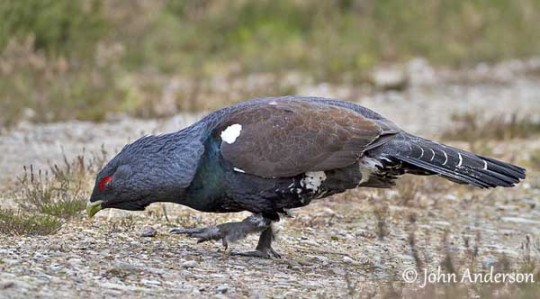




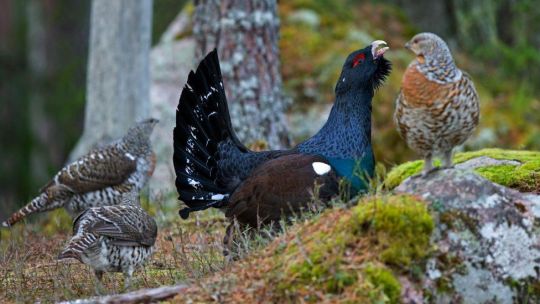


The western capercaillie (Tetrao urogallus), also known as the Eurasian capercaillie, wood grouse, heather cock, cock-of-the-woods, or simply capercaillie is a species in the grouse family which is endemic to the taiga and boreal forest of Northern Eurasia, from Scotland in the west to Russia in the east. They are typically diurnal ground dwelling birds which while capable of flight, are fairly clumsy in the air due to there short rounded wings. While taking off they produce a sudden thundering noise that deters predators. At night they rest in the horizontal branches of tree stands or within thick ground cover such as bushes and sedges, emerging during the day to feed upon seeds, buds, leaves, berries, insects, grasses, and conifer needles. Capercaillies are themselves eaten by wolves, lynx, foxes, eagles, martens, bears, boar, goshawks, and owls. With females reaching around 21- 25 inches (54- 64 cms) long & 3.5 to 5.8lbs (1.5 to 2.5kg) in weight while the male can reach 29 to 40 inches (74 -100cms) long and 9lbs to upwards of 15lbs (4 to 7kg) in weight, the western capercaillie is one of the most size sexually dimorphic living bird species, only exceeded by the larger types of bustards and a select few members of the pheasant family. The females upper parts are brown with black and silver barring; on the underside they are more light and buffish yellow. While the males are dark grey to dark brown, with the breast feathers being dark metallic green. The belly and undertail coverts vary from black to white. Both sexes have a white spot on the wing bow. They have feathered legs, and their toe rows of small, elongated horn tacks provide a snowshoe effect enabling them to traverse thick snow with ease. The breeding season begins in March or April and lasts until May or June. Three-quarters of this long courting season is mere territorial competition between neighboring cocks or cocks on the same courting ground. Towards the end of the courting season the hens arrive on the courting grounds, at which time the dominate cock or cocks flies to an open space nearby and continuously displays. If impressed one or more hens will approach and be mounted. Females will lay 3 to 12 eggs over a 10 day period, which she will incubate for 26 -28 days until hatching. The young will remain with there mother for around 3 months, Under ideal conditions a western capercaillie may live upwards of 18 years.
#pleistocene#pleistocene pride#pliestocene pride#pliestocene#cenozoic#capercaillie#western capercaillie#wood grouse#eurasian capercaillie#bird#birds
40 notes
·
View notes
Text

#philately#ephemera#postage stamp#vintage stamps#stamp collecting#1965#germany stamps#germany#game birds#eurasian woodcock#pheasant#western capercaillie#birds
1 note
·
View note
Text
I would like to offer this resource for therians, an extensive list of all of Sir David Attenborough’s nature documentaries that are available on soap2day, and a full list of what species* they each (notably, prominently) feature the natural behaviors of, separated by episode, and omitting species that were only shown dead, juvenile or being predated on. This took me a while (I have been working on it since Prehistoric Planet’s release) because I did in fact have to watch every single series in full in order to list all the species and the episodes are around 50 minutes long, but enjoy.
Long post ahead:
Most of these shows have closed captioning, which is why I’ve picked soap2day. Planet Earth is the only one that doesn’t. I did not include Dynasties and Dynasties II because each episode only features one species.
Thank you to Birch (@ambiguousmutt) for his help (he watched about half of the episodes) so I didn’t have to do it individually. Credit goes to him as well.
*Sometimes Attenborough doesn’t say the specific species and I was too busy trying to get through the episodes to identify it. In those cases I just put the most specific name I could.
Planet Earth
Episode one (From Pole to Pole): emperor penguin, polar bear, caribou, arctic grey wolf, Amur leopard, six-plumed bird-of-paradise, superb bird-of-paradise, great white shark, African elephant, African buffalo, lechwe, baboon, African wild dog
Episode two (Mountains): gelada, walia ibex, Ethiopian wolf, guanaco, cougar, grizzly bear, markhor, snow leopard, golden eagle, grey wolf, panda, golden snub-nosed monkey, red panda, demoiselle crane
Episode three (Fresh Water): giant salamander, grizzly bear, smooth-coated otter, Nile crocodile, dolphin fish, midge, Amazon river dolphin, dorado, piranha, spectacled caiman, crab-eating macaque, snow goose
Episode four (Caves): wrinkle-lipped free-tailed bat, cockroach, bat hawk, cave swiftlet, yellow-red rat snake, Texas blind salamander
Episode five (Deserts): Bactrian camel, dromedary camel, red kangaroo, fennec fox, guanaco, long-nosed bat, Nubian ibex, flat lizard, lion, African elephant, locust
Episode six (Ice Worlds): snow petrel, Antarctic petrel, south polar skua, humpback whale, emperor penguin, eider, muskox, arctic grey wolf, polar bear, little auk, arctic fox
Episode seven (Great Plains): Mongolian gazelle, red-billed quelea, wildebeest, snow goose, arctic fox, arctic grey wolf, bison, wild ass, Tibetan fox, pygmy hog, African elephant, lion, baboon
Episode eight (Jungles): magnificent bird-of-paradise, spider monkey, howler monkey, siamang gibbon, gliding tree frog, colugo, red crab spider, African elephant, chimpanzee
Episode nine (The Shallow Seas): humpback whale, multiple corals, banded sea krait, trevally, dugong, bottlenose dolphin, Socotra cormorant, salp, comb jelly, sea lion, dusky dolphin, sea urchin, sunflower starfish, short-tailed stingray, great white shark, king penguin, fur seal
Episode ten (Seasonal Forests): Eurasian lynx, moose, crossbill, wolverine, western capercaillie, pine marten, great grey owl, pudu, kodkod, mandarin duck, cicada, red deer, Amur leopard, tiger, mouse lemur
Episode eleven (Ocean Deep): whale shark, oceanic whitetip shark, common dolphin, Cory's shearwater, manta ray, sea spider, vampire squid, spider crab, unnamed deep sea eel, giant isopod, chambered nautilus, Pacific spotted dolphin, mola mola, frigatebird, sailfish, blue whale
Planet Earth II
Episode one (Islands): pygmy three-toed sloth, Komodo dragon, sifaka, marine iguana, Galapagos racer, Buller's albatross, fairy tern, Christmas Island red crab, yellow crazy ant, chinstrap penguin
Episode two (Mountains): Nubian ibex, red fox, golden eagle, grizzly bear, bobcat, flamingo, mountain viscacha rat, snow leopard
Episode three (Jungles): spider monkey, flying lizard, sword-billed hummingbird, river dolphin, jaguar, glass frog, paper wasp, click beetle, red bird of paradise, Wilson's bird of paradise, indri
Episode four (Deserts): lion, Harris's hawk, shrike, locust, sand grouse, pale chanting goshawk, feral mustang, golden mole, desert long-eared bat, darkling beetle, Namaqua chameleon
Episode five (Grasslands): saiga antelope, lion, harvest mouse, carmine bee-eater, Kori bustard, African elephant, serval, Jackson's widowbird, grasscutter ant, compass termite, giant anteater, bison, red fox, arctic grey wolf
Episode six (Cities): langur, peregrine falcon, leopard, European starling, great bowerbird, raccoon, rhesus macaque, spotted hyena, wels catfish
Our Planet
Episode one (One Planet): lesser flamingo, orchid bee, golden-collared manakin, red-capped manakin, blue manakin, cormorant, booby, common dolphin, shearwater, African wild dog, timber wolf
Episode two (Frozen Worlds): gentoo penguin, wandering albatross, narwhal, Pacific walrus, humpback whale, orca, leopard seal, polar bear
Episode three (Jungles): lowland gorilla, forest elephant, black sicklebill, twelve-wired bird-of-paradise, western parotia, mountain treeshrew, Philippine eagle, black spider monkey, leafcutter ant, Sumatra orangutan, velvet worm
Episode four (Coastal Seas): northern fur seal, compass jellyfish, giant trevally, mobula ray, Atlantic stingray, bottlenose dolphin, grey reef shark, whitetip reef shark, sea otter, California sheephead wrasse, Steller's sea lion, bald eagle, humpback whale, Guanay cormorant, Inca tern, Peruvian booby, South American sea lion
Episode five (From Deserts to Grasslands): Socotran cormorant, Arabian leopard, Arabian oryx, African elephant, cheetah, bison, Alcon blue butterfly, saiga, Przewalski's wild horse, tiger
Episode six (The High Seas): blue whale, spinner dolphin, mobula ray, oarfish, anglerfish, bristle worm, giant petrel, black-browed albatross, wandering albatross, bluefin tuna, sea lion, humpback whale
Episode seven (Fresh Water): Australian pelican, torrent duck, grizzly bear, manatee, giant mayfly, common kingfisher, osprey, jaguar, callipterus cichlid, Siamese fighting fish, hippopotamus, lion, African elephant, sandhill crane
Episode eight (Forests): Siberian tiger, bald eagle, rough-skinned newt, great hornbill, African elephant, African wild dog, fossa, gray mouse lemur
A Perfect Planet
Episode one (Volcano): lesser flamingo, marabou stork, Galápagos land iguana, vampire ground finch, Aldabra giant tortoise, North American river otter, coyote, Kamchatka brown bear, wildebeest
Episode two (The Sun): yellow-cheeked gibbon, fig wasp, arctic grey wolf, wood frog, garter snake, arctic fox, Saharan silver ant, golden snub-nosed monkey, sooty shearwater, humpback whales
Episode three (Weather): straw-colored fruit bat, fire ant, Amazonian giant river turtle, desert rain frog, Bactrian camel, Christmas Island red crab, carmine bee-eater, Nile crocodile, African fish eagle, hippopotamus
Episode four (Oceans): common dolphin, marine iguana, flightless cormorant, flamboyant cuttlefish, eider, bottlenose dolphin, lemon shark, manta ray, blacktip reef shark, trevally, rockhopper pengin, Eden's whale
Episode five (Humans): none
Life
Episode one (Challenges of Life): bottlenose dolphins, cheetah, panther chameleon, orca, brown-tufted capuchin, stalk-eyed fly, hippopotamus, Clark's grebe, giant Pacific octopus, strawberry poison-dart frog, leopard seal, orangutan
Episode two (Reptiles and Amphibians): pebble toad, caiman, basilisk, Brazilian pygmy gecko, panther chameleon, Namaqua chameleon, red-sided garter snake, collared iguana, hog-nosed snake, horned lizard, sea krait, African bullfrog, Komodo dragon
Episode three (Mammals): Weddell seal, elephant shrew, aye-aye, caribou, straw-colored fruit bat, lion, spotted hyena, polar bear, brown-nosed coati, meerkat, African elephant, humpback whale
Episode four (Fish): sailfish, flying fish, weedy sea dragon, convict fish, sarcastic fringehead, mudskipper, Hawaiian freshwater goby, hippopotamus, barbel, silvertip shark, clownfish, sea lion, ragged tooth shark, multiple snapper, whale shark
Episode five (Birds): spatuletail hummingbird, lammergeier, red-billed tropicbird, magnificent frigatebird, red knot, horseshoe crab, lesser flamingo, chinstrap penguin, great white pelican, Clark’s grebe, sage grouse, Vogelkop bowerbird
Episode six (Insects): Darwin’s beetle, unnamed damselfly, monarch butterfly, alkali fly, Wilson’s phalarope, oogpister beetle, mongoose, bombardier beetle, honey bee, black bear, Japanese red bug, Dawson’s bee, grass cutter ant
Episode seven (Hunters and Hunted): ibex, short-tailed stoat, brown bear, Ethiopian wolf, California ground squirrel, star-nosed mole, cheetah, red fox, greater bulldog bat, bottlenose dolphin, Bengal tiger, rattlesnake, orca
Episode eight (Creatures of the Deep): Pompeii worm, Humboldt squid, nemertean worm, moon jelly, fried egg jellyfish, spider crab, stingray, cuttlefish, giant Pacific octopus, sunflower sea star, king crab, cleaner shrimp
Episode nine (Plants): monarch butterfly, purple-throated carib hummingbird
Episode ten (Primates): Hamadryas baboon, Japanese macaque, lowland gorilla, spectral tarsier, phayre's leaf monkey, ring-tailed lemur, Sumatra orangutan, chacma baboon, white-faced capuchin, brown-tufted capuchin, western chimpanzee
Blue Planet II
Episode one (One Ocean): bottlenose dolphin, tuskfish, tern, giant trevally, mobula ray, false killer whale, Asian sheepshead wrasse, orca, humpback whale, walrus
Episode two (The Deep): sea toad, Venus’ flower basket, unnamed shrimp, ethereal snailfish, cock-eyed squid, pyrosome, barrel-eyed fish, unnamed siphonophore, yeti crab, Humboldt squid, fangtooth fish, sixgill shark, scabbardfish, zombie worm
Episode three (Coral Reefs): broadclub cuttlefish, coral grouper, day octopus, multiple corals, green turtle, bottlenose dolphin, manta ray, bobbit worm, saddleback clownfish, marbled grouper, grey reef shark
Episode four (Big Blue): spinner dolphin, yellowfin tuna, mobula ray, sailfish, sperm whale, sea turtle, blue shark, great white shark, multiple jellyfish, Portuguese man o' war, whale shark, wandering albatross, shortfin pilot whale
Episode five (Green Seas): Garibaldi, Australian giant cuttlefish, weedy seadragon, common octopus, pyjama shark, sea otter, tiger shark, smooth stingray, zebra mantis shrimp, common dolphin, humpback whale
Episode six (Coasts): Pacific leaping blenny, king penguin, southern elephant seal, Sally Lightfoot crab, Galápagos sea lion, ochre starfish, clingfish, chain moray eel, Atlantic puffin, arctic skua
Episode seven (Our Blue Planet): none
Prehistoric Planet
Episode one (Coasts): Tyrannosaurus rex, Tethydraco, Phosphatodraco, Tuarangisaurus, Mosasaurus hoffmannii, pycnodont fish, ammonites, Kaikaifilu
Episode two (Deserts): Dreadnoughtus, Tarbosaurus, Velociraptor, Mononykus, Barbaridactylus, Secernosaurus
Episode three (Freshwater): Velociraptor, Tyrannosaurus rex, Deinocheirus, Quetzalcoatlus, Masiakasaurus, Beelzebufo, elasmosaur
Episode four (Ice Worlds): dromaeosaur, hadrosaur, Ornithomimus, Olorotitan, troodontid, Antarctopelta, Pachyrhinosaurus, Nanuqsaurus
Episode five (Forests): Austroposeidon, Triceratops, Carnotaurus, Qianzhousaurus, Edmontosaurus, Atrociraptor, Anodontosaurus, Therizinosaurus, Telmatosaurus, Hatzegopteryx
The Hunt
Episode one (The Hardest Challenge): African leopard, African wild dog, Parson’s chameleon, nose-horned chameleon, African mantis, Darwin’s bark spider, Nile crocodile, Amur falcon, orca, cheetah
Episode two (Arctic): polar bear, arctic grey wolf, arctic fox, glaucous gull
Episode three (Forests): tiger, American marten, sparrow hawk, Portia spider, tarsier, harpy eagle, chimpanzee, army ant
Episode four (Oceans): blue whale, frigatebird, dorado, sargassum fish, spinner dolphin, Beroe ovata, Chiroteuthis, lionfish, black-browed albatross, sea lion, tuna, copper shark, common dolphin, Bryde's whale
Episode five (Plains): cheetah, caracal, honey badger, termite, bald eagle, lion, Ethiopian wolf, hotrod ant, spoor spider
Episode six (Coasts): bottlenose dolphin, algae octopus, sand bubbler crab, long-tailed macaque, marine otter, grizzly bear, grey wolf, peregrine falcon, orca, humpback whale
Episode seven (Conservation): none
Life In Colour
Episode one (Seeing In Color): Indian peafowl, mandrill, Costa’s hummingbird, magnificent bird-of-paradise, blue moon butterfly, fiddler crab, mantis shrimp, flamingo, poison dart frog
Episode two (Hiding In Color): Bengal tiger, langur, ptarmigan, crab spider, zebra, Cuban painted snail, blue-striped fangblenny, common waxbill, pin-tailed wydah, Augrabies flat lizard
Frozen Planet II
Episode one (Frozen Worlds): emperor penguin, orca, Pallas’s cat, Siberian tiger, grizzly bear, hooded seal, polar bear
Episode two (Frozen Ocean): polar bear, beluga, harp seal, skeleton shrimp, crested auklet, orca
Episode three (Frozen Peaks): high-casqued chameleon, japanese macaque, kea, andean flamingo, giant panda, golden eagle, andean mountain lion
Episode four (Frozen South): king penguin, Antipodean wandering albatross, blue whale, Weddell seal, chinstrap penguin, snow petrel, leopard seal, orca
Episode five (Frozen Lands): grey wolf, arctic fox, Amur leopard, Siberian tiger, painted turtl, Lapland bumblebee, snowy owl, caribou, grizzly bear
Episode six (Our Frozen Planet): none
Africa
Episode one (Kalahari): fork-tailed drongo, ostrich, black rhinoceros, Angolan giraffe, African leopard, armored ground cricket, spider wasp
Episode two (Savannah): Agama lizard, shoebill, bee-eaters and rollers, lesser flamingo, African elephant, crowned eagle, African fish eagle, martial eagle
Episode three (Congo): chimpanzee, central African rock python, Angola banana frog, African skimmer, rockfowl, African elephant
Episode four (Cape): emperor swallowtail, giant kingfish, African penguin, monkey beetle, springbok, yellow-billed kite, pied crow, ghost crab, vundu catfish, Nile crocodile, Bryde’s whale, great white shark, common dolphin
Episode five (Sahara): Grevy’s zebra, naked mole rat, barn swallow, Dromedary camel, dung beetle, crocodile, western yellow wagtail, Saharan silver ant
Episode six (The Future): none
527 notes
·
View notes
Text
I have seen various living things "claimed" as Scottish by Scottish bodies of authority (like the forestry organisation), such as: Scots Pine (obv), red squirrels, Capercaillies. things I find funny about this are, for example, elsewhere the Scots Pine is known as Baltic pine, red squirrels are less rare in Scotland than the rest of Britain but actually elsewhere in Europe they're just common, and though the English name for Capercaillie comes from a Scottish Gaelic word* the bird itself is simply a northern eurasian creature and not actually special to Scotland.
I do not like false exceptionalism, and while I do like celebrating the nature we have in the country of my birth, I would like to celebrate it for what it is: part of a continuum stretching all the way across Europe and through northern Asia. Until someone points out to me some creature or biome that is genuinely unique to Scotland, I will continue to be annoyed by this.
7 notes
·
View notes
Text

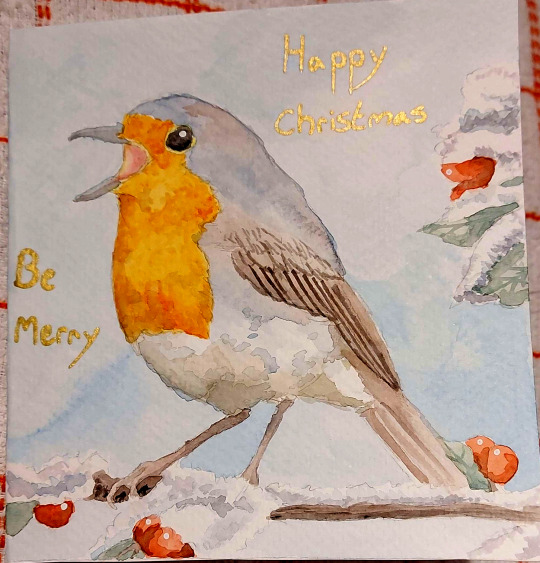



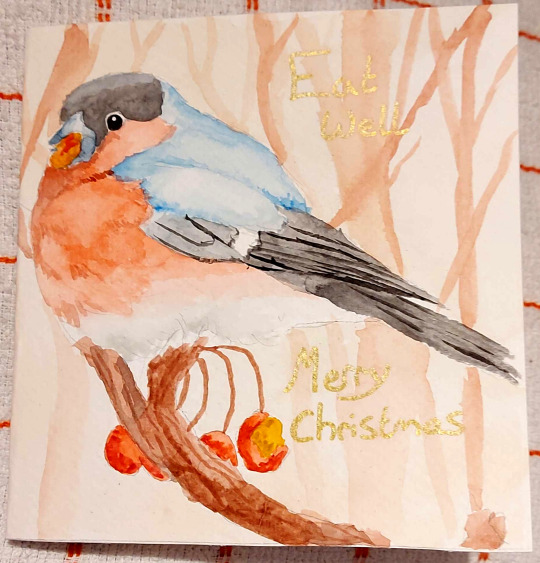
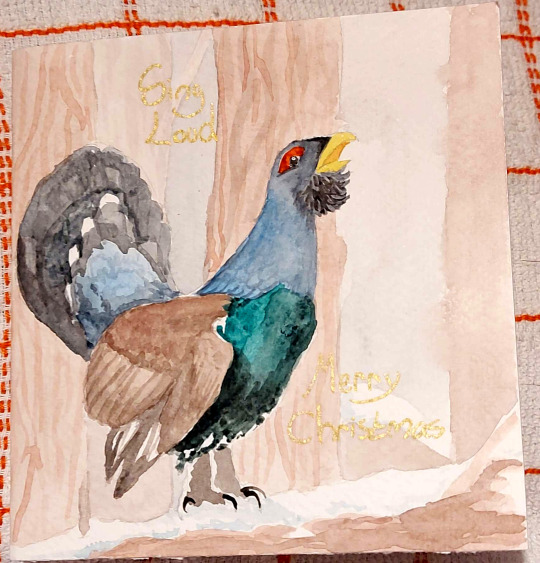
Here's this year's Christmas cards- sent to family and close friends. I decided to make some this year, since I wanted to do something nice. the theme obviously being British birds.
Here we have: Dunnock, (Eurasian) Robin, Barn Owl, (Eurasian) Goldcrest, Tawny Owl, (Eurasian) Bullfinch and a Capercaillie.
I'm getting better with watercolours. I just need to practice fine details. Each card took 2-3 hours to paint; they're not very big.
#goldenchocobo's art#birds#Dunnock#Robin#Barnowl#Goldcrest#Tawny Owl#Bullfinch#Capercaillie#Christmas Cards
6 notes
·
View notes
Text
bird blog of @leopardsealz! if i disappear on my main, i'm probably here. i'm from ireland and am very autistic about birds <3 on this account i only follow blogs that mostly post about birds so no hard feelings if i don't follow you back!!
birds are tagged by order, family, genus & species (common name)!
other tags are:
contact call: text post
flight call: answered ask
display flight: my photography
bird art: self explanatory
vulture culture: taxidermy, bones
birdposting: un-queued reblogs (polls, memes etc)
if i like your post i have added it to my queue, which is set to post 10 times a day. i won't like posts without queueing them (with very few exceptions). i also tend to like art posts after they are posted by my queue as i feel bad liking art without reblogging it lol
feel free to send asks about birds! my favourite birds include tubenoses, skuas, frigatebirds, gulls, peregrines, lammergeiers, harriers, haliaeetus eagles & western capercaillies! shoutout to buteo hawks, anseriformes, other suliformes, golden eagles, ospreys, verreaux's eagles, common cuckoos, peafowl, ardeidae, kingfishers, woodpeckers, macaws, spotted flycatchers, eurasian skylarks, warblers, thrushes & paridae too
no discourse blogs, proshippers or exclusionists please


6 notes
·
View notes
Note
Hello dear resident bird-knower, have you seen this video? https://www.tumblr.com/miadoesntwantyoutofollowher/644839758213840896?source=share
I would love to know what the fuck? how the fuck? where the fuck can I find more?
Thanks.
We haven't spoken before, but looking at your posts, I figured you'd be the most likely to know :)
omg first of all Thank You for coming to me with this I had not seen this video before !! and secondly, this magnificent beast is a Western Capercaillie ! which I really like because they're really cool and most importantly close relatives to one of my favorite birds of all time the ptarmigan <3
here's what animalia.bio has to say about them :
"The western capercaillie (Tetrao urogallus ), also known as the Eurasian capercaillie, wood grouse, heather cock, cock-of-the-woods, or simply capercaillie, is a heavy member of the grouse family and the largest of all extant grouse species. The heaviest-known specimen, recorded in captivity, had a weight of 7.2 kilograms (16 pounds). Found across Europe and the Palearctic, this primarily-ground-dwelling forest grouse is renowned for its courtship display. This bird shows extreme sexual dimorphism, with males nearly twice the size of females. The global population is listed as "least concern" under the IUCN, although the populations of central Europe are declining and fragmented, or possibly extirpated."
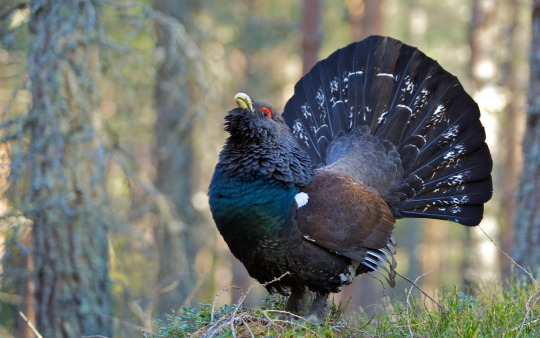
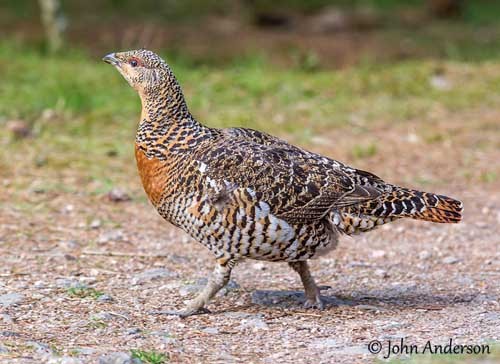
#tres-wack#that's a big boi !#birds#sorry im publishing this I hope that's not an issue#I don't do it usually but I wanna share the birds#western capercaillie#asks#grand tétras
3 notes
·
View notes
Text
Przedszkole Nr 1 Z Działami Integracyjnymi W Żywcu
Żurek Z., Armatys P., Tomasiewicz K. 2006. Wyznaczenie granic ostoi głuszca Tetrao urogallus L. w Gorcach. Żurek Z., Armatys P. 2013. Występowanie głuszca Tetrao urogallus L. w Gorcach; koncepcja ochrony. Żurek Z., Armatys P., Tomasiewicz J. 2014. Gorczańskie głuszce. Zawadzka D. 2014. Podręcznik najlepszych prac ochrony głuszca i cietrzewia. Maszynopis. Przygotowanie będące stroną projektu Krajowego Programu Ochrony Głuszca. Maszynopis. Ministerstwo Środowiska, Warszawa. Manuskrypt, Muzeum i Instytut Zoologii PAN, Warszawa. Muzeum Dzieci KidsQuest łączy się na znacznych obszarach nauki, technologii, inżynierii, gry i matematyki, i nie interesuje się byciem przy biurku i występowaniem na tablicy, ale łączy się na interaktywnej interakcji z nowymi ruchomymi częściami bycia. W budynku głównym muzeum wystawiono tylko osiem pojazdów szynowych. Tamtejsze Ministerstwo Transportu w sztuce o dobro wspólne obywateli zbiera informacje dotyczące poszczególnych pojazdów. Jakie wspólne państwowe interesy miała KIEDYKOLWIEK Polska z Bułgarią, Węgrami czy Chorwacją? Zawadzka D., Ciach M., Żurek Z. 2013a. Głuszec Tetrao urogallus. Unger C., Klaus S. 2008. A translocation study using capercaillie Tetrao urogallus from Central Russia.

Siano R., Klaus S. 2013. Capercaillie Tetrao urogallus release projects in Germany after 1950 - a review. Rutkowski R., Zawadzka D., Suchecka E., Merta D. 2016. Conservation genetics of the capercaillie In Poland - delineation of conservation units. IUCN, Gland, Switzerland and Cambridge, UK and the World Pheasant Association, Reading, UK. Wegge P., Rolstad J. 2011. Clearcutting forestry and Eurasian boreal forest grouse: long-term monitoring of sympatric capercaillie Tetrao urogallus and black grouse T. tetrix reveals unexpected effect on their population performances. Saniga M. 2002b. Nest loss and chick mortality in Capercaillie (Tetrao urogallus) and hazel grouse (Bonasia bonasia) in West Carpathians. Saniga M. 1996b. Distribution, habitat preferences and breeding biology of the capercaillie Tetrao urogallus population In the Velka Fatra Mountains (West Carpathians). Storch I.1993. Habitat selection by capercaillie in summer and autumn: Is bilberry importent? Wegge P., Larsen B. 1987. Spacing of adult and subadult male common capercaillie during the breeding season. Starling A. 1991. Captive breeding and release. Sokos C. K., Birtsas P. K., Tsachalidis E. P. 2008. The aims of galliforms release and choice of techniques.
Witzenberger KA, Hochkirch A. 011. Ex situ conservation genetics: a review of molecular studies on the genetic consequences of captive breeding programmes for endangered animal species. 2009. Genetic structure of the endangered red-crowned cranes in Hokkaido, Japan and conservation implications. Wagner E. 1987. Effect of inadequate predator control on the reintroduction of capercaillie. Rolstad J., Wegge P. 1987. Distribution and size of capercaillie leks in relation to old forest fragmentation. Saniga M. 1996a. Habitat characteristics of capercillie Tetrao urogallus Leks In central Slovakia. Saniga M. 2004. Seasonal differences in habitat use in capercaillie (Tetrao urogallus) in the West Carpathians. Saniga 2002a. Sesonal variation in the diet of Capercaillie Tetrao urogallus in the West Carpathian Mountains. Sirkiä S., Lindén A., Helle P., Nikula A., Knape J., Lindén H. 2010 .Are the declining trends in forest grouse populations due to changes in the forest age structure? Summers R. W., Dugan D., Proctor R. 2010. Numbers and breeding success of Capercaillies Tetrao urogallus and Black Grouse Tetrao tetrix at Abernethy Forest, Scotland. Taberlet P, Williams, S. sprawdzian , and Hoffman, E. A. Minimizing genetic adaptation in captive breeding programs: A review. Segelbacher G, Storch I. Capercaillie in the Alps: genetic evidence of metapopulation structure and population decline.
Snow D. and Perrins C. M. 1998. The Complete Birds of the Western Palearctic. Wegge P., Kastdalen L. 2007. Pattern and causes of natural mortality of capercaillie, Tetrao urogallus, chicks in a fragmented boreal forest. Monografia pokonferencyjna. Janów Lubelski, 16-18 października 2007. Źródło Danych Lasów Państwowych, Warszawa, ss. Monografia Pokonferencyjna. Janów Lubelski, 16-18 października 2007, Centrum Informacyjne Lasów Państwowych, Warszawa, ss. Storch, I. 2007. Grouse - Status Survey and Conservation Action Plan 2006−2010. WPA/BirdLife/SSC Grouse Specialist Group. 2007. Atlas rozmieszczenia ptaków lęgowych Polski 1985-2004. Bogucki Wyd. Tomiałojć L, Stawarczyk T. 2003. Awifauna Polski. Jabłonce zawiązali Polską Radę Narodową, jaka w ich imieniu ogłosiła przyłączenie regionu do niepodległej Polski i objęła tymczasową administrację. The 4-th International Grouse Sympozium. Tornberg R. 2001. Pattern of goshawk Accipiter gentilis predation on four forest grouse species in northern Finland. Zawadzka D., Zawadzki J. 2001. Krajowy program ochrony populacji głuszca. Zawadzka D., Zawadzki J. 2008. Dynamika populacji głuszca w Puszczy Augustowskiej w latach 1911-2005. W: Ochrona Kuraków Leśnych.
1 note
·
View note
Text
Because I am obsessed with several things, here is a brainfart where I have assigned PJO characters each their Norwegian bird species. All links go to pictures taken by Morten Vang at fuglefoto.net
Percy - Puffin / Lunde
Cute and pretty, is a badass swimmer.
Annabeth - Eurasian siskin / Grønnsisik
You thought I'd chose an owl, didn't you? Annabeth is not defined by her mother. The Eurasian siskin is one of the most common birds in Norway, and seemingly everywhere. But back in the days, we thought it had a mystic power - an invisibility stone, which it used to hide its nest!
Jason - Golden Eagle / Kongeørn
The king of the eagles, the symbol of bravery. Need I say more.
Piper - Northern Lapwing / Vipe
This beautiful bird doesn't look like much, but it is badass. Its wings are huge, and it puts up an amazing aerial display out on the fields. Its song is odd and mysterious, like nothing you've heard before. The mother is fierce. She will try to shield her eggs even from tractors. Sadly, it is now a threathened species.
Leo - Common Redstart / Rødstjert
Back in the days, they said that if a redstart nested by your house, your home was protected from fire. The redstart looks a carefree, happy, and mischevious, but everyone who knows a thing or two about birds are aware that they live very stressful lives.
Hazel - Magpie / Skjære
For obvious reasons.
Frank - Western Capercaillie / Storfugl Tiur
One of the largest and most badass birds in the Scandinavian forest. They look funny and not very intimidating, but you do NOT want to agitate it! Fight it, and you will lose.
Nico - Goldcrest / Fuglekonge
The tiny king. The Norwegian species of kinglets, whose name translates to "king of the birds". The latin name Regulus regulus means royal. It is also the smallest bird in Norway, and weights only 2 grams!
Reyna - Red-necked Phalarope / Svømmesnipe
These are some of the most badass women of Norwegian birds. For once, the female has the brightest colours. Secondly, the males look after the chicks and one female can have many men. Feminist birds (tm)
Will - Blue tit / Blåmeis
The blue tit has bright colours in yellow, sky blue and forest green. It is a cute ball of fluff, but anyone who has tried bird banding can tell you they bite! It was thought to give good luck.
Grover - European Golden Plover / Heilo
For many of us, the call of the golden plover is the sound of the wild. It is a soft and tender, almost lonely, sound.
Calypso - European Goldfinch / Stillits
This bird is known for its beauty. Sadly, it is often captured and sold illegally so that people can keep it in cages.
Bianca - Common Swift/ Tårnseiler
This bird is as free as they come. It travels all the way to Southern Africa in winter and spend most of its life flying. It is so adapted to this lifestyle, it must nest in high places where it can throw itself out in the air. If it ever falls to the ground, it is trapped, and won't be able to take flight again without help.
Apollo - Common Blackbird / Svarttrost
The Danish name of the blackbird is Solsort, which translates to "sun black". It is often thought to have the prettiest song of the Norwegian birds.
Meg - Eurasian Wren / Gjerdesmett
It is simply impressive how LOUD this tiny bird is! Really! Wow!
The Stoll brothers - Siberian jays / Lavskriker
The original pranksters. Tend to travel in family groups. Will follow you and gossip about you when you are out hiking in the forest, but will be your BFFs if you offer them food. (Also my favourite bird).
Clarisse - Ural owl / Slagugle
Do not mess with the ural owl. If you have to be close to the nest, wear protective goggles. This bitch will fight to protect her chicks, and you will end up in hospital, if you are lucky.
Thalia - Raven
Because no bird is as punk goth as a raven.
#ural owl#clarisse la rue#siberian jay#travis stoll#connor stoll#wren#meg mccaffrey#blackbird#apollo#swift#bianca#goldfinch#calypso#golden plover#grover#blue tit#will solace#bianca di angelo#red-necked phalarope#Reyna Avila Ramírez-Arellano#goldcrest#nico di angelo#capercaille#frank zhang#magpie#hazel levesque#redstart#leo valdez#puffin#percy jackson
12 notes
·
View notes
Photo
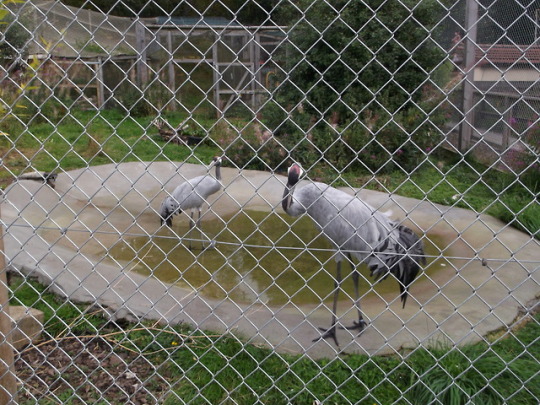
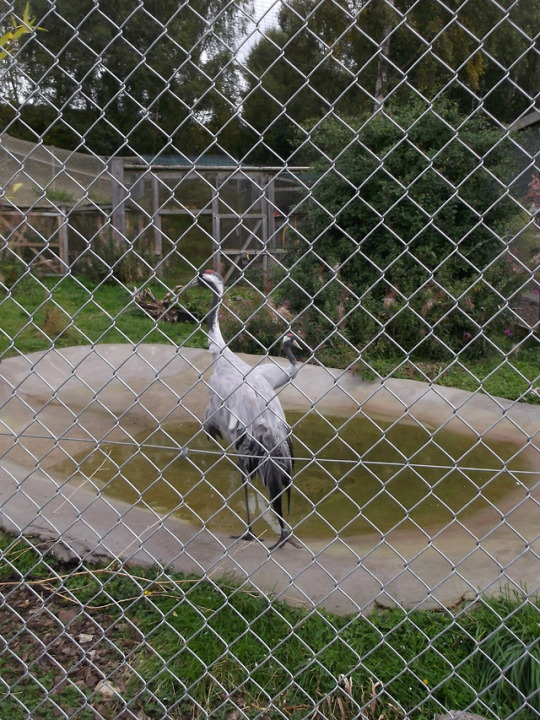
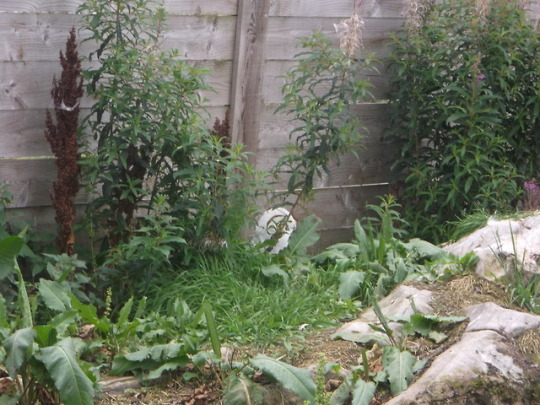
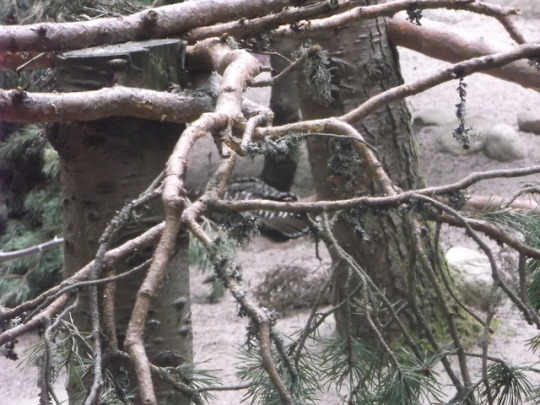
Eurasian Crane (Grus grus), Snowy Owl (Bubo scandiacus) and a female Capercaillie (Tetrao urogallus)
As you can see, my wildlife photography skills need improvement.
9 notes
·
View notes
Text
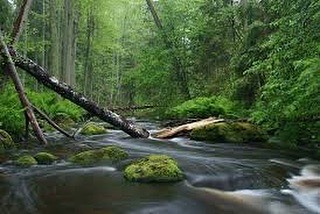

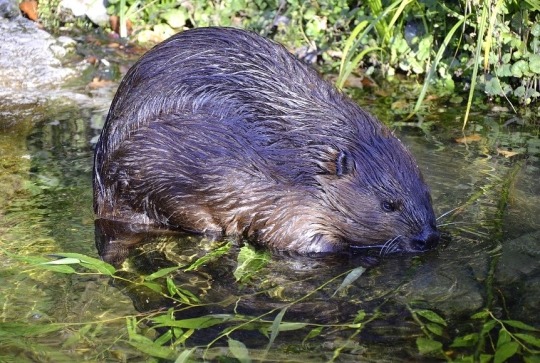
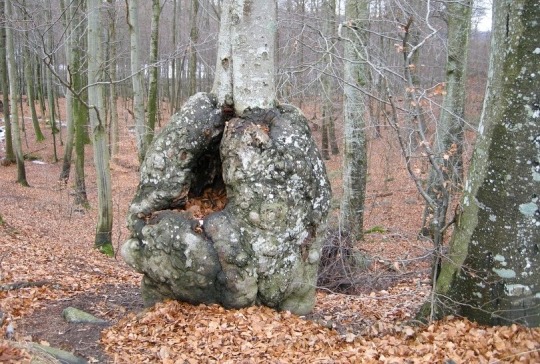
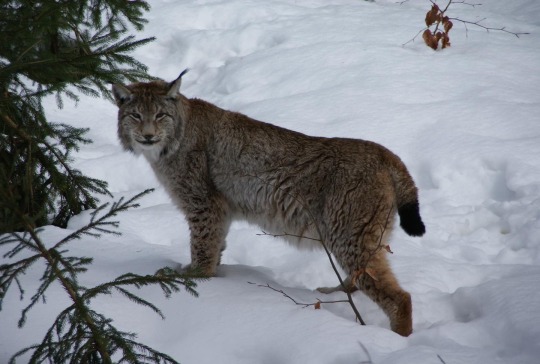
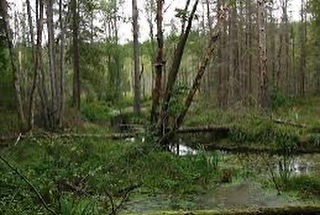
A patchwork of water and land, the Sarmatic mixed forests are bejewelled by more than 10,000 lakes and 20,000 rivers and streams. Trees shelter eagle-owl, hazel grouse, and the captivating capercaillie; the boggy forest floor is rich in wetland plants. Otter, black-tailed heron, and black stork inhabit waterways, alongside the iconic Eurasian beaver. Once overhunted to the point of near-extinction, these swimming rodents are recovering their populations following extensive management efforts and reintroductions. These mixed forests cover the entirety of Latvia and Estonia, reaching into Belarus, Lithuania, Sweden, southwesternmost Finland, southernmost Norway, and the Russian Federation. The priority conservation actions for the next decade will be to: 1) ensure forest management plans incorporate conservation objectives by maintaining a healthy mix of native tree species; 2) moderate peat extraction to conserve bog biodiversity at the landscape level; and 3) restore forest cover in regions where it has been significantly lost through rewilding and reintroductions. #sarmatic #forest #haven
1 note
·
View note
Text
Which Scottish folk-rock group shares its name with the largest member of the grouse family?

Capercaillie is a Scottish folk band founded in 1984 and fronted by Karen Matheson (born 1963). The band performs traditional Gaelic songs as well as contemporary English music. Their Gaelic music blends traditional lyrics with modern instruments including electric guitars. The band is named after the Western capercaillie, a bird native to Scotland.
Between 1984 and 2013, Capercaillie released eleven studio albums, including 'Cascade' (1984), 'Sidewaulk' (1989), 'Delirium' (1991), 'Nàdurra' (2000) and 'At the Heart of It All' (2013). Their second album 'Crosswinds' (1987) was recorded in only three days, and their fifth album 'Secret People' (1993) reached number 40 in the UK charts. In 2002, they performed at the Celtic Connections festival in Glasgow, Scotland. Donald Shaw (born 1967), a founding member of the band, was appointed the Celtic Connections Artistic Director in 2006.
The western capercaillie is the largest member of the grouse family. It is also called the Eurasian capercaillie, wood grouse and heather cock. It is sexually dimorphic, meaning the male and the female birds look remarkably different.
1 note
·
View note
Text
How conserving nature's 'umbrella' species could benefit whole habitats
How conserving nature’s ‘umbrella’ species could benefit whole habitats
How conserving nature’s ‘umbrella’ species could benefit whole habitats


A Eurasian stone-curlew stands amid short grass. Dhaval Vargiya/Shutterstock, CC BY-SA
In conservation, charismatic mammals and birds such as the black rhinoceros and the capercaillieget a lot of attention, while others, like invertebrates, are often ignored. One way of addressing this problem is to focus on protecting…
View On WordPress
0 notes
Photo
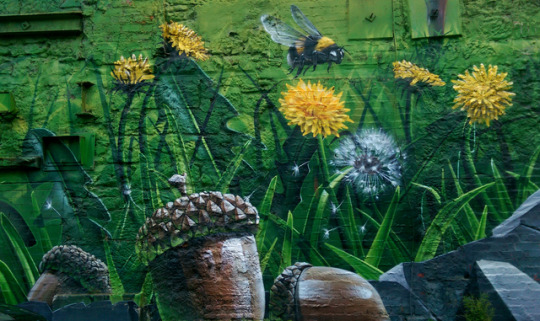

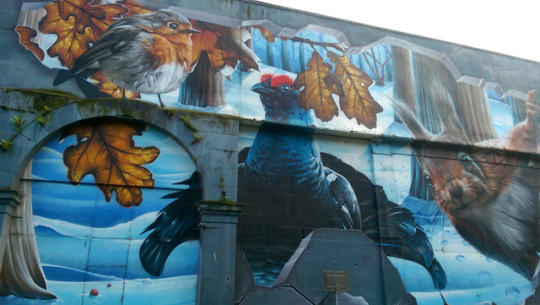
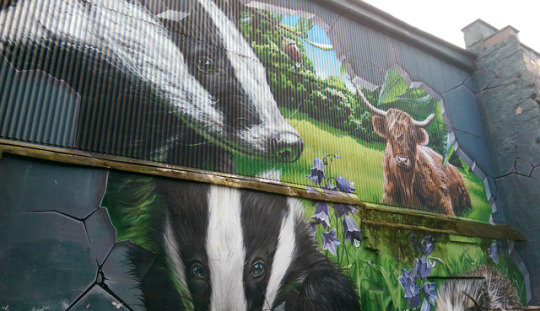
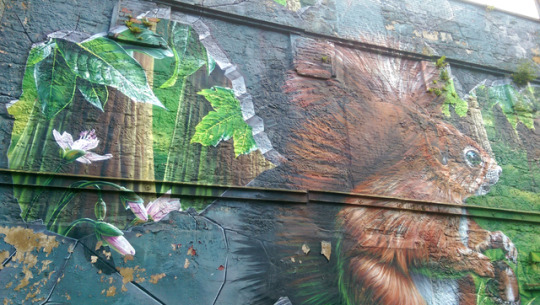
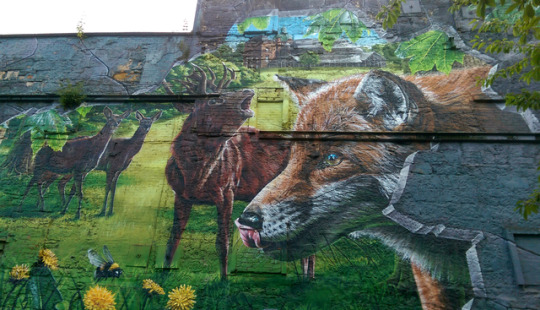
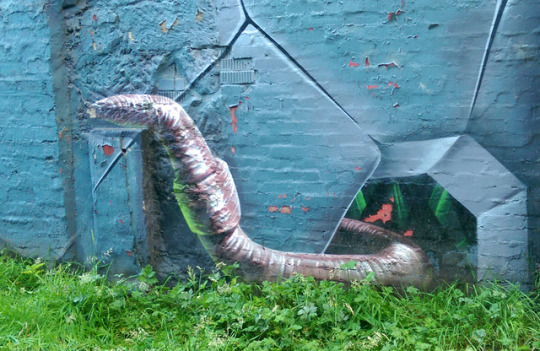
Fellow Glasgow Residents by Sam Bates aka Smug
Glasgow is now full of stunning mural paintings by super talented Australian artist Smug, but my favourite has to be this one, which is massive and takes the entire side of a building facing a parking lot (hence the awkward angles, I was trying to avoid the cars parked in front of it). Depicted with hyper-realistic photographic precision, you can recognise many of the plants, animals and fungi that inhabit Scotland. From top to bottom:
White tailed bumblebee (Bombus lucorum), Dandelion (Taraxacum officinale), European oak (Quercus robur), Penny bun or Porcino (Boletus edulis), Fly agaric (Amanita muscaria), Scots pine (Pinus Sylvestris), Eurasian blue tit (Cyanistes caeruleus), European robin (Erithacus rubecula), Western capercaillie (Tetrao urogallus), Eurasian red squirrel (Sciurus vulgaris), European badger (Meles meles), Harebell, or Scottish Bluebell (Campanula rotundifolia), Highland cattle (Bos taurus), European hedgehog (Erinaceus europaeus), Red fox (Vulpes vulpes), Red deer (Cervus elaphus), Sycamore maple (Acer pseudoplatanus), Common earthworm (Lumbricus terrestris)
If you see anything I have missed just let me know!
#fellow glasgow residents#sam bates#smug#mural art#art#artblr#photography#flora and fauna#fungi#wildlife#scottish wildlife#nature#plants#animals#plant id#animal id#glasgow#scotland#murales#street art#plantblr#animalblr
28 notes
·
View notes
Photo
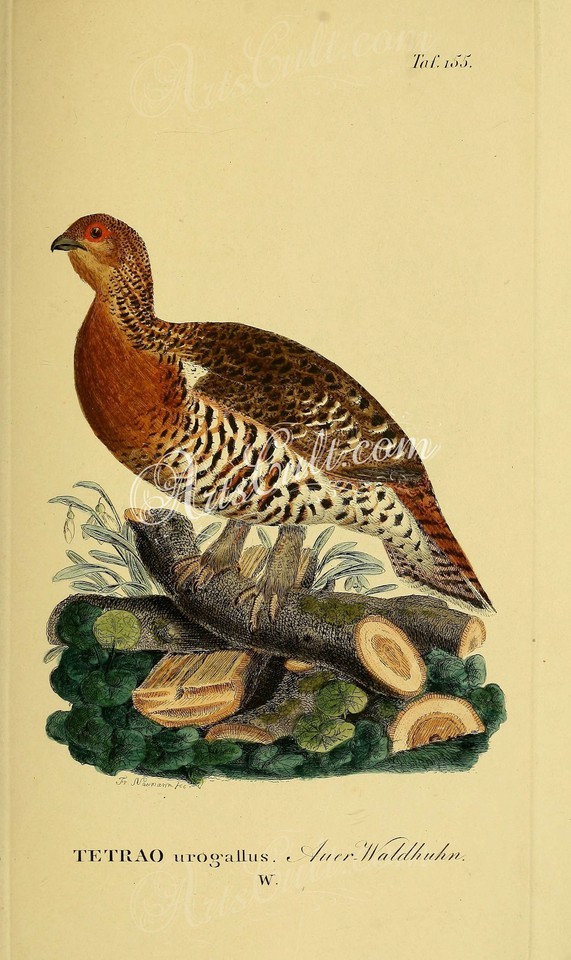
Eurasian Capercaillie, 2 - high resolution image from old book.
0 notes
Photo
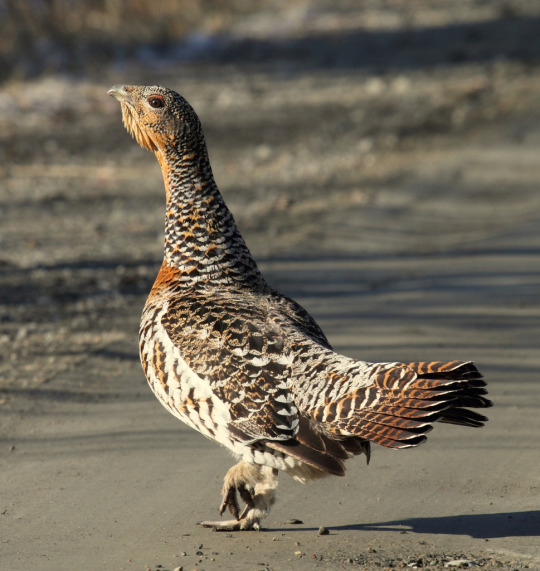
Western Capercaillie (Tetrao urogallus) >>by Lars Falkdalen Lindahl
#Western Capercaillie#Eurasian Capercaillie#Wood Grouse#Heather Cock#Tetrao urogallus#Aves#Galliformes#Phasanidae
172 notes
·
View notes